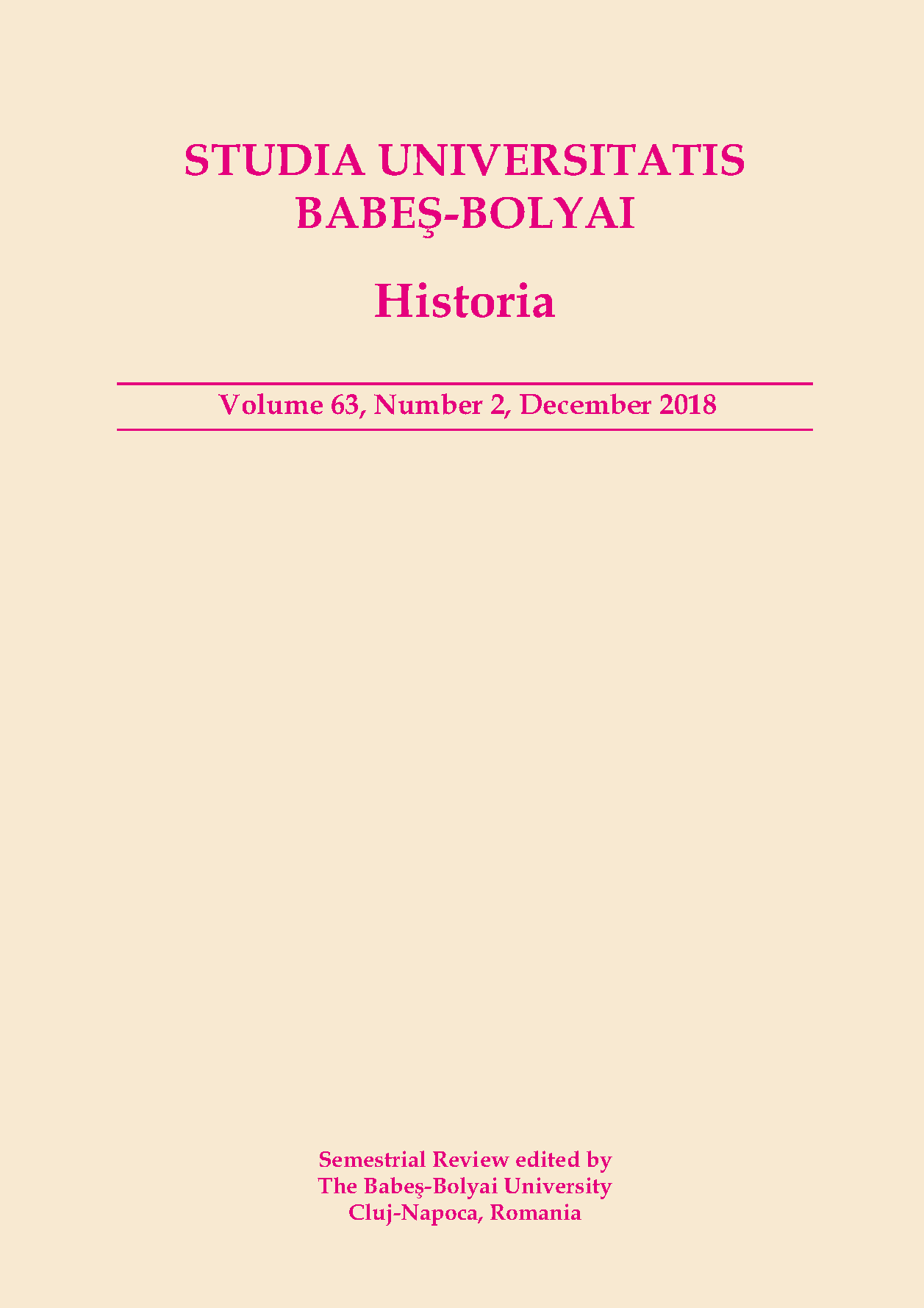Astra’s Membership in the Early 1900s
DOI:
https://doi.org/10.24193/subbhist.2018.2.03Keywords:
cultural associations, Transylvania, Hungary, early 20th century, civil society, prosopography.Abstract
The study continues and develops the research initiated by V. Moga at the beginning of the 2000s regarding Astra’s members in the period of 1913-1920, through a chronological extension towards the beginning of the century and a more detailed analysis of the evolutions during the First World War. After the Association went through a period of stabilization of the number of its members in the first years of the 20th century, starting with 1906, partially as an effect of the festive moment represented by the inauguration of the “Astra Museum” in the previous year, a period of growth followed, reaching its peak in 1912, one year after the 50 year jubilee. The combined effect of the extinguishment of interest after the festive moment and that of the breakout of the war caused a consistent recoil, which ended only in 1916, as a result of the efforts of the Association’s leadership at all levels, however only the year of 1919 brought a return to the pre-war situation. From the point of view of the composition and of the profile of the body of members, it is obvious that Astra has mobilized the individual and institutional energies of all of the Romanian socio-professional layers, a significant share being held by the clergy, lawyers and banking institutions, followed by teachers and professors, “owners” (of mines, of farms, etc.), the body of petty functionaries, the doctors and pharmacists, officers, craftsmen and merchants, and, definitely, the peasants – the latter dominating a particular lower category, that of the “helping members”, which included several thousands of persons. Women represented a relatively discreet presence within Astra, their number and percentage remaining low before 1919, and seeming to be often linked to the presence of their male partners.
Rezumat: Membrii Astrei la începutul secolului al XX-lea. Studiul continuă şi dezvoltă cercetările iniţiate de V. Moga la începutul anilor 2000 privind corpul membrilor Astrei în perioada 1913-1920 printr-o extensie cronologică spre începutul secolului şi o analiză mai detaliată a evoluţiilor din perioada Primului Război Mondial. După ce în primii ani ai secolului al XX-lea Asociaţiunea a trecut printr-o perioadă de stabilizare a numărului membrilor, începând cu anul 1906, parţial ca efect al momentului festiv reprezentat de inaugurarea Muzeului Astrei în anul precedent, a urmat o perioadă de creştere, ce şi-a atins vârful în 1912, anul imediat următor jubileului de 50 de ani. Efectul combinat al stingerii interesului după momentul festiv şi al izbucnirii războiului a cauzat un recul consistent, care s-a oprit abia în anul 1916, ca urmare a eforturilor conducerii Asociaţiunii la toate nivelurile, însă abia anul 1919 a adus revenirea la situaţia antebelică. Din punct de vedere al compoziţiei şi profilului corpului membrilor, este evident că Astra a mobilizat energiile individuale şi instituţionale ale tuturor straturilor socio-profesionale, o pondere semnificativă având instituţiile de credit, avocaţii şi clerul, urmaţi de învăţători şi profesori, „proprietari” (de mine, agricoli etc.), funcţionărimea măruntă, medici şi farmacişti, ofiţeri, meseriaşi şi comercianţi şi, bineînţeles, ţărani – aceştia din urmă dominau o categorie aparte, cea a „membrilor ajutători”, care includea câteva mii de persoane. Femeile au reprezentat o prezenţă relativ discretă în rândul Astrei, numărul şi ponderea lor rămânând reduse înainte de 1919 şi apărând legate, de multe ori, de parteneri masculini.
Cuvinte-cheie: asociaţii culturale, Transilvania, Ungaria, începutul secolului al XX-lea, societate civilă, prosopografie.
Downloads
Published
How to Cite
Issue
Section
License
Copyright (c) 2018 Studia Universitatis Babeș-Bolyai Historia

This work is licensed under a Creative Commons Attribution-NonCommercial-NoDerivatives 4.0 International License.






